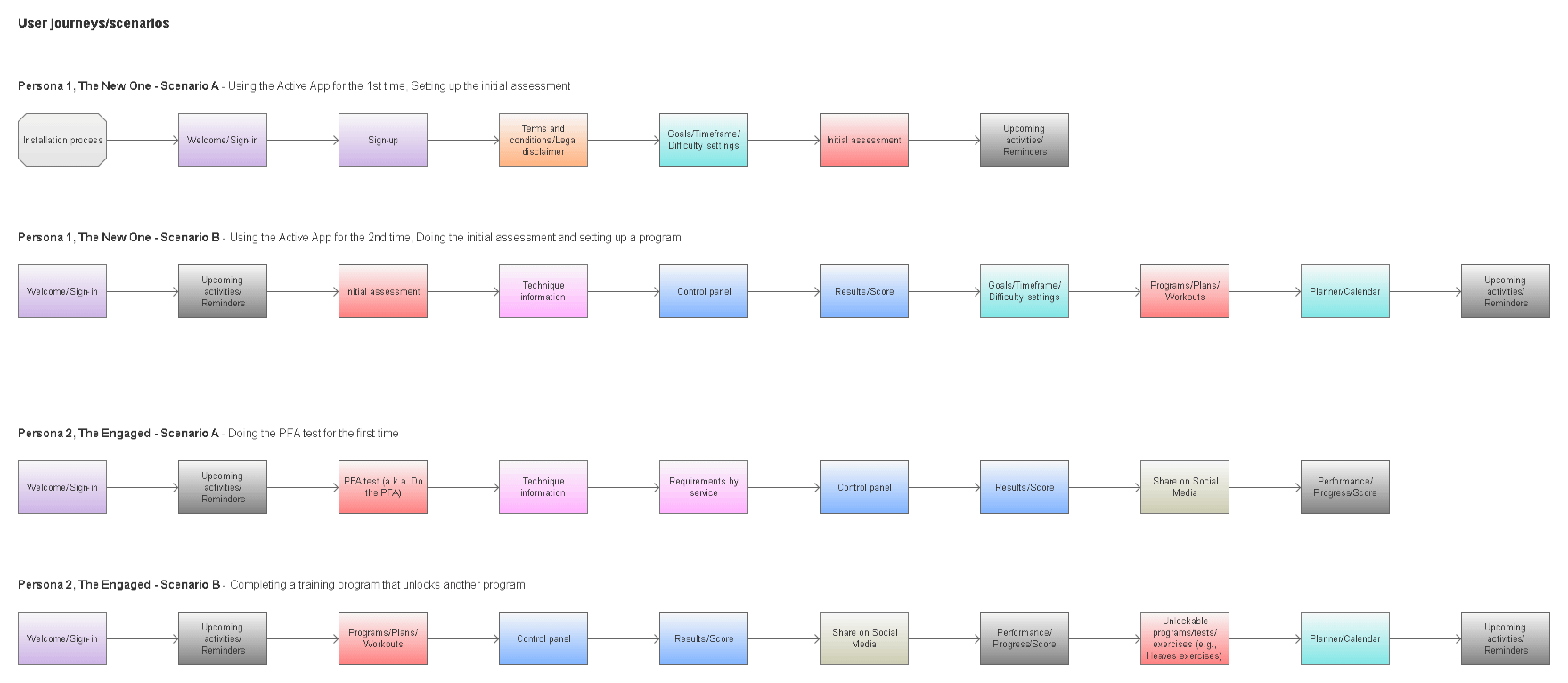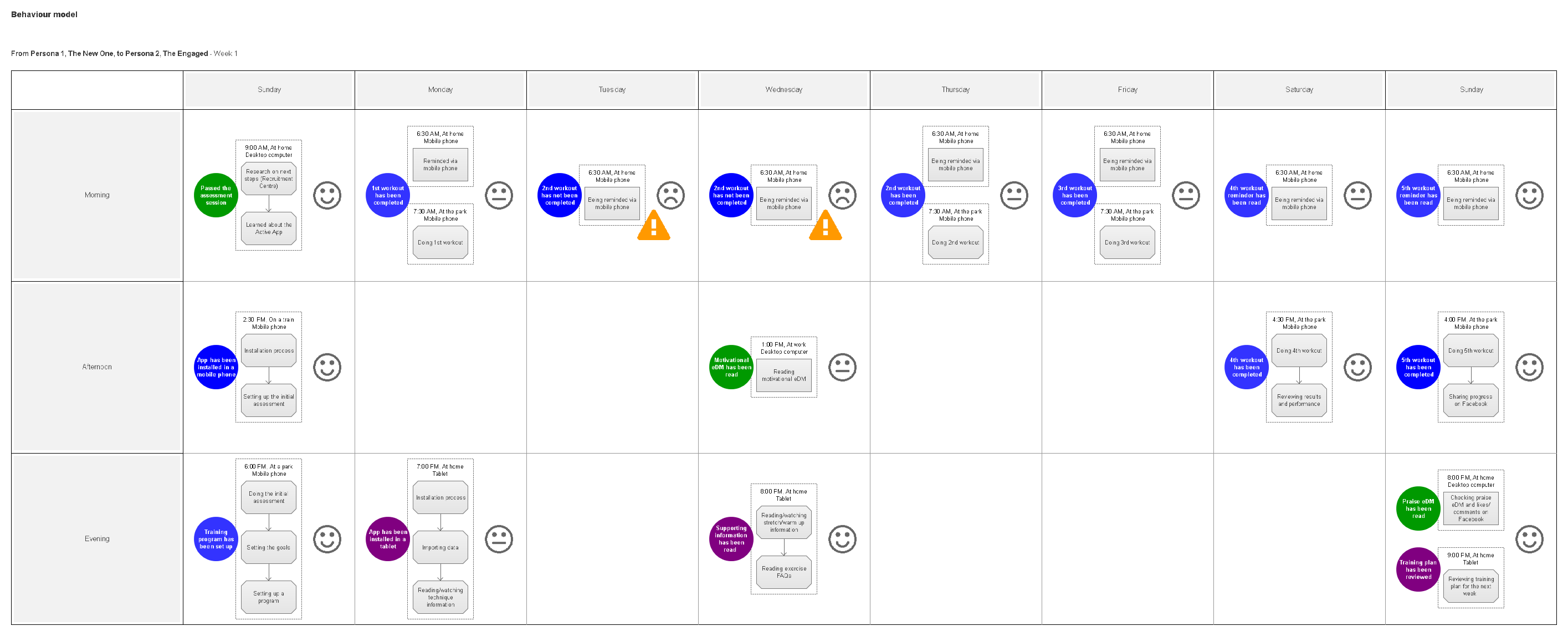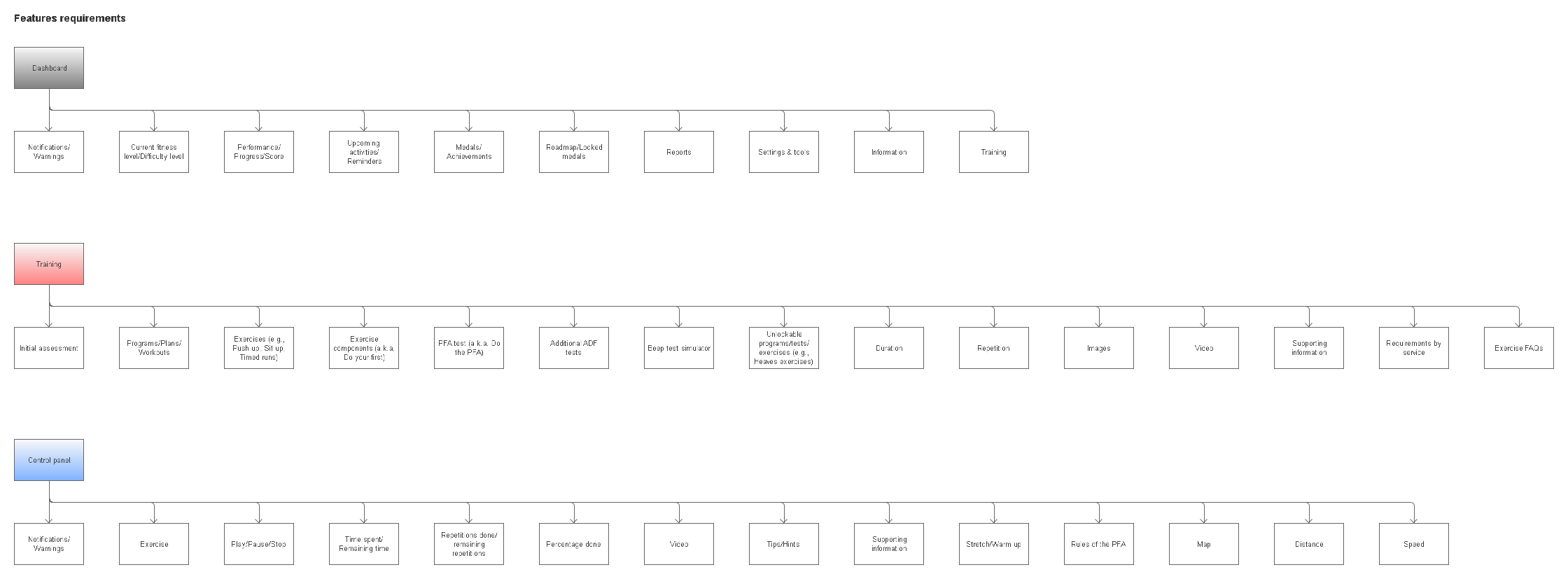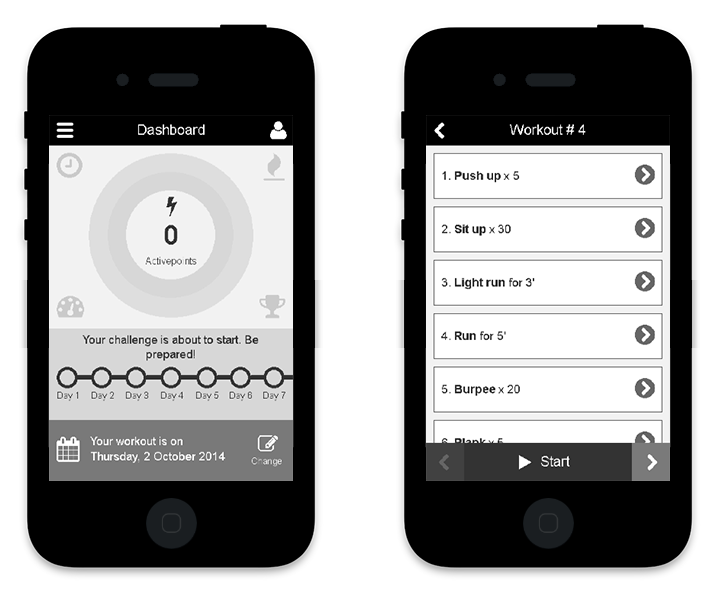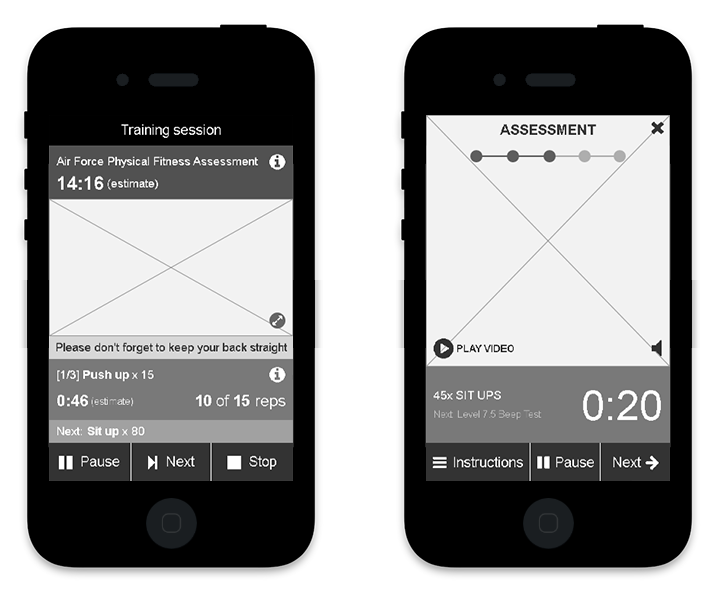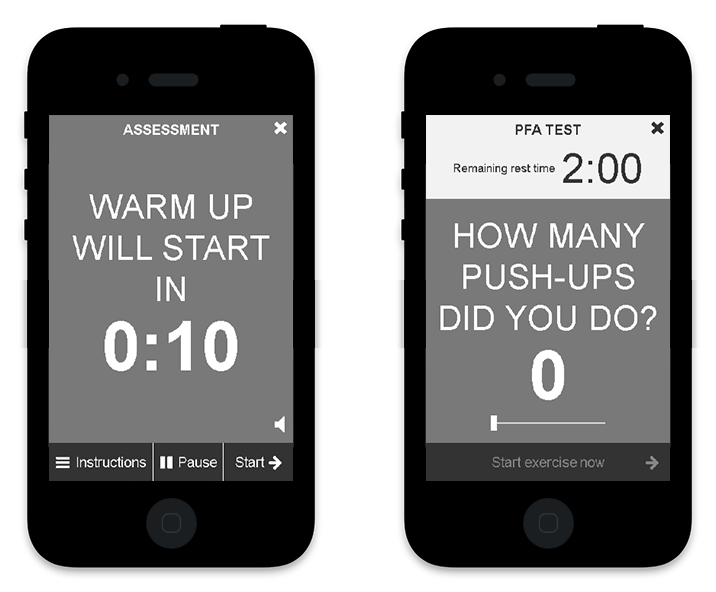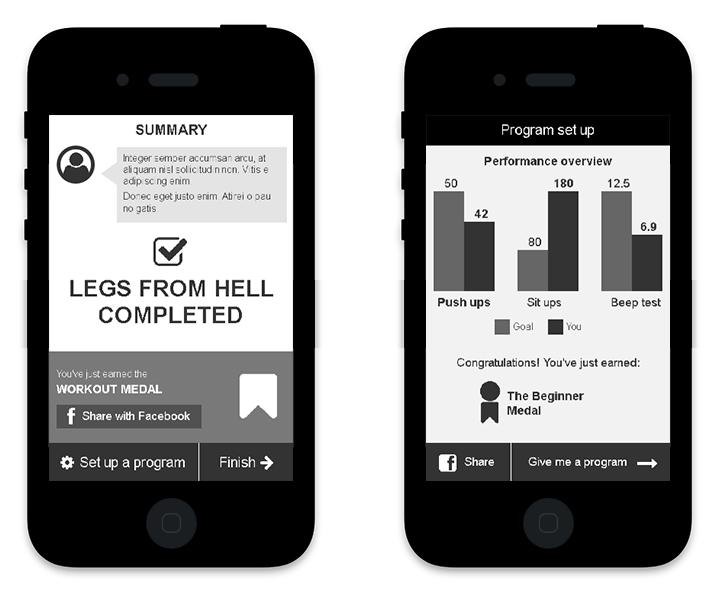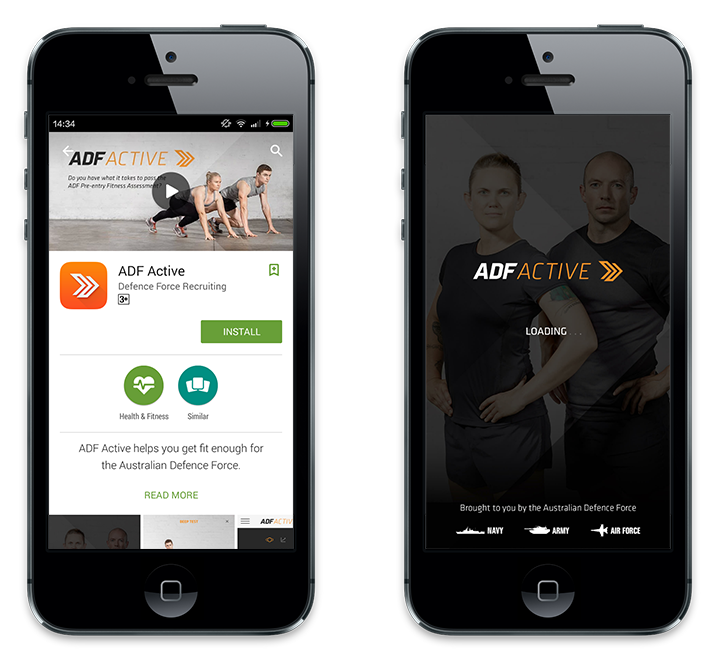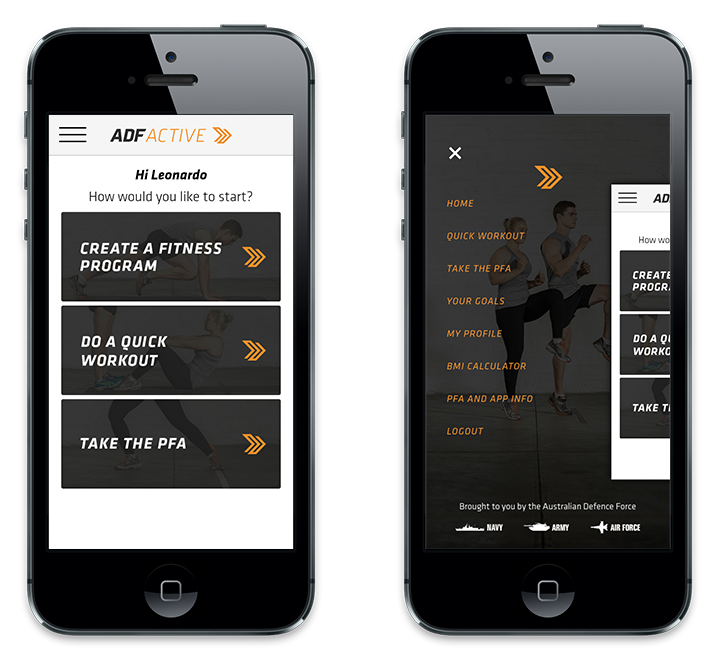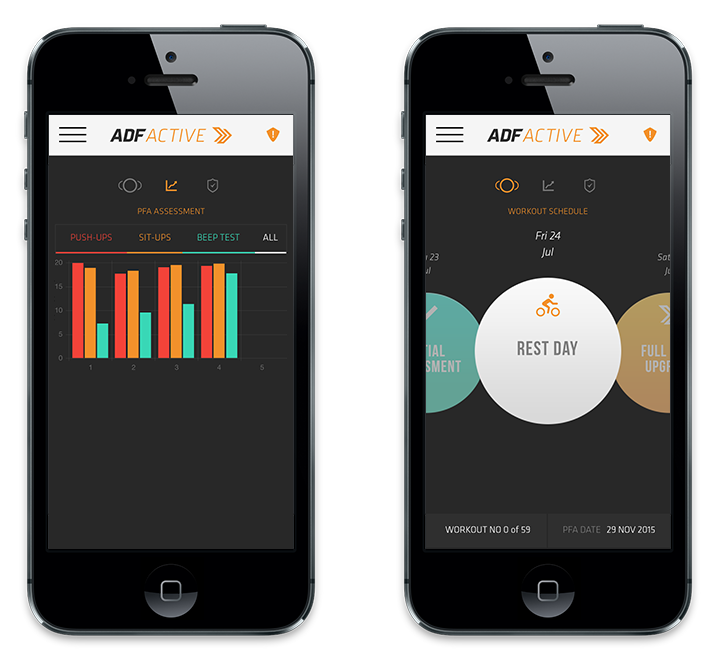Defence Jobs’ ADF Active app
User research and data gathering (market research, competitive review, content audit, focus groups, interviews and web traffic analysis), and product strategy, design and development (structure, user journeys, use cases, behaviour model, functional specifications and wireframes) of Defence Jobs’ new ‘ADF Active’ fitness app.
Focus groups, interviews and web traffic analysis were carried out in order to understand key user needs, business requirements and technical constraints. As a result, a strategy plan was outlined, which encompassed a prioritised feature list (product backlog).
This app was released on 20 July 2015, and it supports both Android and iOS.
In 2016, ADF Active was among the One Show UX/UI finalists in the following categories:
– Consumer: Mobile – Utility
– Craft: Interface Design
Work done at Havas Worldwide Australia.
The full story:
The PFA (Preliminary Fitness Assessment) is a critical component of the Australian Defence Force (ADF) assessment process. Around 16% of people who attempted a test in FY13/14 failed to pass, even after multiple attempts. With a current cost per enlistee of several thousand dollars in marketing alone, even a small reduction in this failure rate could represent well over a million dollars in marketing cost efficiency. This drop off is particularly marked for female recruitment, a key priority for the ADF, as 70% of those who fail the PFA are female.
ADF Active is a fitness app designed specifically to provide fitness training for a range of fitness levels. Built in 2011, the app provided step-by-step instructions, plus image and video demonstrations, to ensure users get practical and relevant information on improving and maintaining their fitness level. The app supported iOS only, and it was last updated in 2012.
In 2014, Havas Worldwide Australia was briefed to update the app, with a view to both improve usability and results, as well as delivering an Android version of the app to accompany the updated iOS version. I helped in reviewing the existing app, conducting focus groups sessions and interviews with users and stakeholders, undertaking a competitive review, and assessing the leading mobile platforms. Based on the findings from those activities, it became clear that the app should aim to (1) educate on technique, (2) inform of what to expect on the day of the PFA, and (3) train to a standard well above the minimum required. In light of these objectives, I ran a few brainstorming sessions in order to provide a comprehensive and prioritised list of features, which turned out to outline an entirely new ADF Active.
At the end of 2014, I worked on the app’s interface, user journeys, and overall user experience. Working along with the ADF and other team members, we built a training fitness program that could drive unsuitable applicants who are taking the PFA to become suitable. In 2015, production and development were initiated and, in July, the app was finally released.
The (new) ADF Active allows prospects to evaluate how close they are to the ADF recruitment standards. It creates an individual training program based on the user’s fitness level, tracks individual progress and provides expert guidance for correct execution of exercises. The feedback was highly positive from both the client’s end (DFR and ADF) and the user’s end. This project involved a lot of commitment and teamwork, and it is something to be proud of.
Project link

